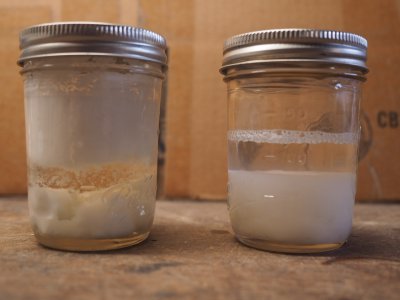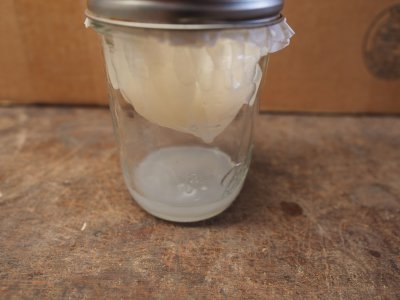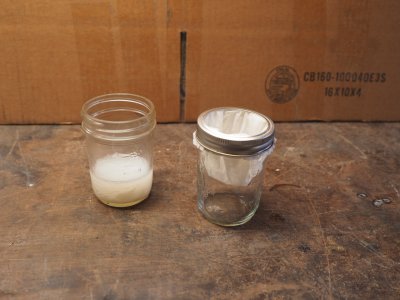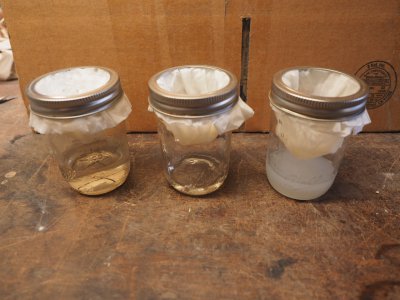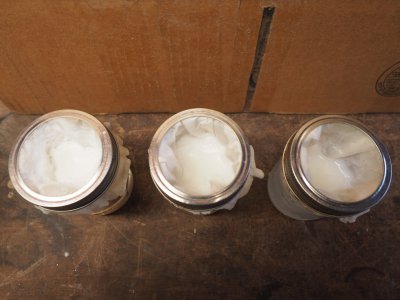You would have to try it. I'm not clear on whether the commercial lard is before or after pressing.
The stuff is cheap enough.
Let us know.
Just got done trying an experiment with lard.
I was attempting to obtain lard oil from lard. I did a bunch of reading last night and the process by which you separate the waxy solid components from the liquid oil components of a fat is called winterizing or destearinating. Here's an excerpt from Britannica Online...
"It is often desirable to remove the traces of
waxes (
e.g., cuticle wax from seed coats) and the higher-melting
glycerides from fats. Waxes can generally be removed by rapid chilling and filtering. Separation of high-melting glycerides, or stearine, usually requires very slow cooling in order to form crystals that are large enough to be removed by filtration or centrifuging. Thus
linseed oil may be winterized to remove traces of waxes that otherwise interfere with its use in paints and varnishes. Stearine may be removed from
fish oils in order to separate the solid glycerides that would detract from its use in paints and alkyd resins. At the same time, fish stearine is more suitable than whole oil for edible purposes.
Cottonseed and
peanut oils may be destearinated to produce salad oils that remain liquid at low temperatures.
Tallows and other animal fats may be destearinated for simultaneous production of hard fats (high in
stearic acid content for special uses such as in making candles) and of liquid oil called oleo oil." (Britannica Online)
I also found some information and research papers about the formation of crystals in lard at various temperatures and the process by which they can be separated. In case anyone is interested in the chemistry of lard...
https://core.ac.uk/download/pdf/34617334.pdf
As much as I could read before my eyes started crossing tells me that fat crystals form in certain sizes and at certain temperatures in lard. To get lard oil you must separate out those crystals from the surrounding oil in which they are suspended. If I interpreted the information correctly (up for debate) I figured I'd melt some lard, let it sit awhile til it cooled to about 18 degrees C then try to filter it through a coffee filter.
So I melted some, a few spoons, and set a thermometer in the melted lard for a while. Of course I left it sit and forgot about it...
I remembered in time to catch it at 25 C. It had already begun crystallizing and was the consistency of, maybe latex paint or a tiny bit thicker. Maybe pudding. Anyway it was still very soft, yet not liquid. I tried to put some through a coffee filter but it would not pass through under gravity.
The bottom side of the filter did get coated with a very clear film of oil. This may be what I'm looking for. But as I tried to gently force the soft lard through the filter, some of the crystals were coming through.
Ultimately I think you'd need a much finer filter than the paper coffee variety and you'd have to force the soft lard through the filter with some kind of press.
All in all it was a bust but I learned more about lard than I ever wanted to know!
Oh! I also tried dissolving some lard in acetone (about equal parts) and then filtering that through a coffee filter. All it did was catch the lard in the filter and allow the acetone to seep through. Not sure what I was expecting with that one. Maybe the filtered acetone has a small amount of lard oil dissolved in it. Then I suppose you could allow the acetone to evaporate off and be left with pure lard oil with no waxy solids?
That might be worth another try...

